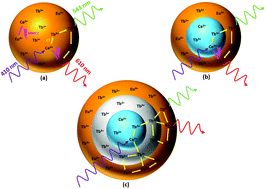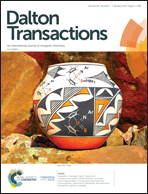On the sensitization of Eu3+ with Ce3+ and Tb3+ by composite structured Ca2LuHf2Al3O12 garnet phosphors for blue LED excitation
Abstract
This work deals with the photoluminescence of various composite structured Ca2LuHf2Al3O12 garnet type LED phosphors. It is well known that sensitization of Eu3+ with Ce3+ suffers from metal-to-metal charge transfer (MMCT) quenching. Spatial separation of the sensitizer and activator results in a reduced quenching mechanism and thus higher luminescence intensities, when Ce3+ is excited in the blue spectral range and transfers its energy to Eu3+. The phosphor particles were prepared via different synthesis techniques. The phase purity of the synthesized particles was determined by X-ray powder diffraction. Scanning electron microscopy images were obtained to study the particle morphology and composite formation. Photoluminescence properties were determined by recording the emission spectra, excitation spectra and diffuse reflectance spectra. Furthermore, the temperature dependent emission spectra and fluorescence lifetimes were recorded to compare thermal quenching and decay behavior of the samples. External quantum efficiencies (EQEs) were calculated to examine the MMCT quenching behavior. Since the EQE of Ca2LuHf2Al3O12:Ce3+,Tb3+,Eu3+ is lower than 1%, it could be demonstrated that the composite approach significantly increases the EQE due to the spatial separation of Ce3+ and Eu3+.



 Please wait while we load your content...
Please wait while we load your content...